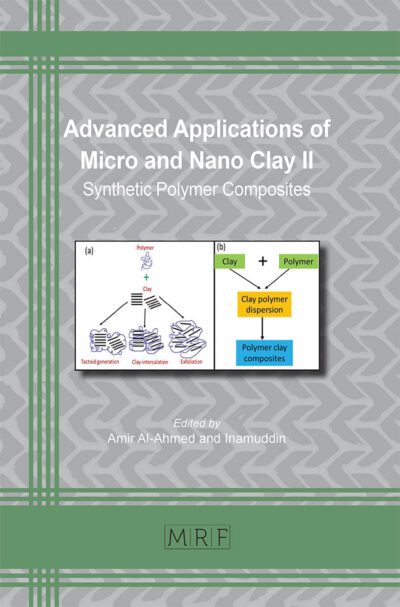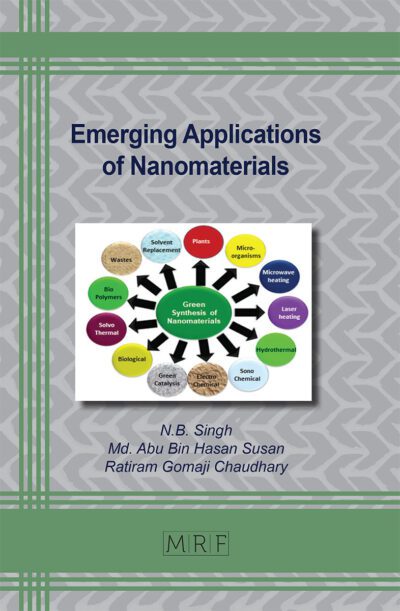Chemical Composition and Pulping of Tunisian Almond and Fig Stems – A Comparison with Tunisian Date Palm Rachis
Ibtissem Moussa, Ramzi Khiari, Ali Moussa, Mohamed Farouk Mhenni
download PDFAbstract. In the present paper, the main objectives of this paper are the characterization of two Tunisian cellulosic by-products (almond and fig stems). The first part of this work is devoted to the determination of the chemical composition. Their chemical composition was showed that they present amounts of holocellulose, lignin and cellulose similar to those encountered in Tunisian date palm rachis. In the second part of this paper, the ensuing pulps of almond and fig stems are characterized in terms of degree of polymerization, fiber length and fiber width. These properties were compared to the properties of a Tunisian date palm rachis that was fully characterized by Khiari et al. (2010). Finally, the results of this work clearly demonstrated that almond and fig stems can be considered as a possible alternative source of fibers for cellulose derivatives and/or as lignocellulosic fibers for fiber-reinforced composite materials or papermaking application.
Keywords
date palm rachis, almond stems, fig stems, cellulose fiber, characterization
Published online 4/20/2019, 7 pages
Copyright © 2019 by the author(s)
Published under license by Materials Research Forum LLC., Millersville PA, USA
Citation: Ibtissem Moussa, Ramzi Khiari, Ali Moussa, Mohamed Farouk Mhenni, Chemical Composition and Pulping of Tunisian Almond and Fig Stems – A Comparison with Tunisian Date Palm Rachis, Materials Research Proceedings, Vol. 11, pp 286-292, 2019
DOI: https://doi.org/10.21741/9781644900178-24
The article was published as article 24 of the book By-Products of Palm Trees and Their Applications
![]() Content from this work may be used under the terms of the Creative Commons Attribution 3.0 licence. Any further distribution of this work must maintain attribution to the author(s) and the title of the work, journal citation and DOI.
Content from this work may be used under the terms of the Creative Commons Attribution 3.0 licence. Any further distribution of this work must maintain attribution to the author(s) and the title of the work, journal citation and DOI.
References
[1] I. Moussa, R. Khiari, A. Moussa, R.E. Abouzeid, M.F. Mhenni, F. Malek, Variation of Chemical and Morphological Properties of Different Parts of Prunus Amygdalus L and Their Effects on Pulping, Egypt. J. Chem. 62 (2019) 343–356. https://doi.org/10.21608/ejchem.2018.4827.1429
[2] Z. Marrakchi, R. Khiari, H. Oueslati, E. Mauret, F. Mhenni, Pulping and papermaking properties of Tunisian Alfa stems (Stipa tenacissima)—Effects of refining process, Ind. Crops Prod. 34 (2011) 1572–1582. https://doi.org/10.1016/j.indcrop.2011.05.022
[3] A. El Gendy, R. Khiari, F. Bettaieb, N. Marlin, A. Dufresne, Preparation and application of chemically modified kaolin as fillers in Egyptian kraft bagasse pulp, Appl. Clay Sci. 101 (2014) 626–631. https://doi.org/10.1016/j.clay.2014.09.032
[4] I. Moussa, R. Khiari, A. Moussa, M.F. Mhenni, M. Naceur Belgacem, Physico-chemical characterization of polysaccharides and extraction of cellulose from annual agricultural wastes, Cellul. Chem. Technol. 52 (2018) 841–851.
[5] P.W. Hart, A.W. Rudie, Anthraquinone – A Review of the Rise and Fall of a Pulping Catalyst, Tappi J. 13 (2014) 23-31.
[6] A. Rodríguez, R. Sánchez, M.E. Eugenio, R. Yáñez, L. Jiménez, Soda-anthraquinone pulping of residues from oil palm industry, Cellul. Chem. Technol. 44 (2010) 239–248.
[7] K. Ramzi, M. Nizar, M. Farouk, B.M. Naceur, M. Evelyne, Sodium carboxylmethylate cellulose from date palm rachis as a sizing agent for cotton yarn, Fibers Polym. 12 (2011) 587–593. https://doi.org/10.1007/s12221-011-0587-1
[8] R. Khiari, M.F. Mhenni, M.N. Belgacem, E. Mauret, Chemical composition and pulping of date palm rachis and Posidonia oceanica – A comparison with other wood and non-wood fibre sources, Bioresour. Technol. 101 (2010) 775–780. https://doi.org/10.1016/j.biortech.2009.08.079
[9] R. Khiari, E. Mauret, M.N. Belgacem, F. Mhenni, Tunisian date palm rachis used as an alternative source of fibres for papermaking applications, Bioresources 6 (2011) 265–281.
[10] Z. Hu, M.P. Srinivasan, Y. Ni, Preparation of Mesoporous High-Surface-Area Activated Carbon, Adv. Mater. 12 (2000) 62–65. https://doi.org/10.1002/(sici)1521-4095(200001)12:1%3C62::aid-adma62%3E3.0.co;2-b
[11] Information on: https://www.fao.org/faostat/en/#home.
[12] L. Wise, Chlorite holocellulose, its fractionation and bearing on summative wood analysis and on studies on the hemicelluloses, Paper Trade J. 122 (1946) 35-43.
[13] J.F. Saeman, W.E. Moore, R.L. Mitchell, M.A. Millett, Techniques for the determination of pulp constituents by quantitiative paper chromatography, Tappi J. 37 (1954) 336–343.
[14] R. Passas, M. Lecourt, P. Nougier, W. Minko, B. Khelifi, Effets de la remise en suspension des pâtes sur leur caractérisation morphologique, ATIP. Assoc. Tech. 58 (2002) 6–13.
[15] A.J. Ragauskas, G.T. Beckham, M.J. Biddy, R. Chandra, F. Chen, M.F. Davis, B.H. Davison, R.A. Dixon, P. Gilna, M. Keller, P. Langan, A.K. Naskar, J.N. Saddler, T.J. Tschaplinski, G.A. Tuskan, C.E. Wyman, Lignin Valorization: Improving Lignin Processing in the Biorefinery, Science 80 (2014) 1246843–1246843. https://doi.org/10.1126/science.1246843
[16] C. Fang, J.E. Schmidt, I. Cybulska, G.P. Brudecki, C.G. Frankær, M.H. Thomsen, Hydrothermal Pretreatment of Date Palm (Phoenix dactylifera L) Leaflets and Rachis to Enhance Enzymatic Digestibility and Bioethanol Potential, Biomed Res. Int. 2015 (2015) 1–13. https://doi.org/10.1155/2015/216454
[17] T.S. Khan, U. Mubeen, Wheat Straw: A Pragmatic Overview, Curr. Res. J. Biol. Sci. 4 (2012) 673–675.
[18] N.R.J. Hyness, N.J. Vignesh, P. Senthamaraikannan, S.S. Saravanakumar, M.R. Sanjay, Characterization of New Natural Cellulosic Fiber from Heteropogon Contortus Plant, J. Nat. Fibers 15 (2018) 146–153. https://doi.org/10.1080/15440478.2017.1321516
[19] S.S. Saravanakumar, A. Kumaravel, T. Nagarajan, P. Sudhakar, R. Baskaran, Characterization of a novel natural cellulosic fiber from Prosopis juliflora bark, Carbohydr. Polym. 92 (2013) 1928–1933. https://doi.org/10.1016/j.carbpol.2012.11.064
[20] Y. Hu, O. Hamed, R. Salghi, N. Abidi, S. Jodeh, R. Hattb, Extraction and characterization of cellulose from agricultural waste argan press cake, Cellul. Chem. Technol. 51 (2017) 263–272.
[21] W. Wang, R.C. Sabo, M.D. Mozuch, P. Kersten, J.Y. Zhu, Y. Jin, Physical and Mechanical Properties of Cellulose Nanofibril Films from Bleached Eucalyptus Pulp by Endoglucanase Treatment and Microfluidization, J. Polym. Environ. 23 (2015) 551-558. https://doi.org/10.1007/s10924-015-0726-7
[22] R. Liu, H. Yu, Y. Huang, Structure and morphology of cellulose in wheat straw, Cellulose 12 (2005) 25–34. https://doi.org/10.1023/b:cell.0000049346.28276.95













